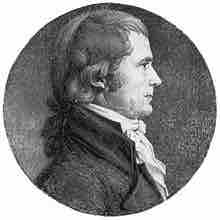Introduction
The United States Constitution can be changed informally. Informal amendments mean that the Constitution does not specifically list these processes as forms of amending the Constitution, but because of change in society or judicial review changed the rule of law de facto. These methods depend on interpretations of what the constitution says and on interpretive understanding of the underlying intent. This type of change occurs in two major forms: through circumstantial change and through judicial review.
Societal Change
Sometimes society changes, leading to shifts in how constitutional rights are applied. For example, originally only land-holding white males could vote in federal elections. Due to a burgeoning middle class at the peak of the Industrial Revolution in the 1800s, society became focused on expanding rights for the middle and working classes. This led to the right to vote being extended to more and more people. However, formal recognition of the right of poor whites and black males, and later of women, was only fully secured in the Fifteenth Amendment (1870) and the Nineteenth Amendment (1920).
Judicial Review
In the United States, federal and state courts at all levels, both appellate and trial, are able to review and declare the constitutionality of legislation relevant to any case properly within their jurisdiction. This means that they evaluate whether a law is or is not in agreement with the Constitution and its intent. In American legal language, "judicial review" refers primarily to the adjudication of constitutionality of statutes, especially by the Supreme Court of the United States. This is commonly held to have been established by Chief Justice John Marshall in the case of Marbury vs. Madison, which was argued before the Supreme Court in 1803 . A number of other countries whose constitutions provide for such a review of constitutional compatibility of primary legislation have established special constitutional courts with authority to deal with this issue. In these systems, no other courts are competent to question the constitutionality of primary legislation.

John Marshall
John Marshall established judicial review.